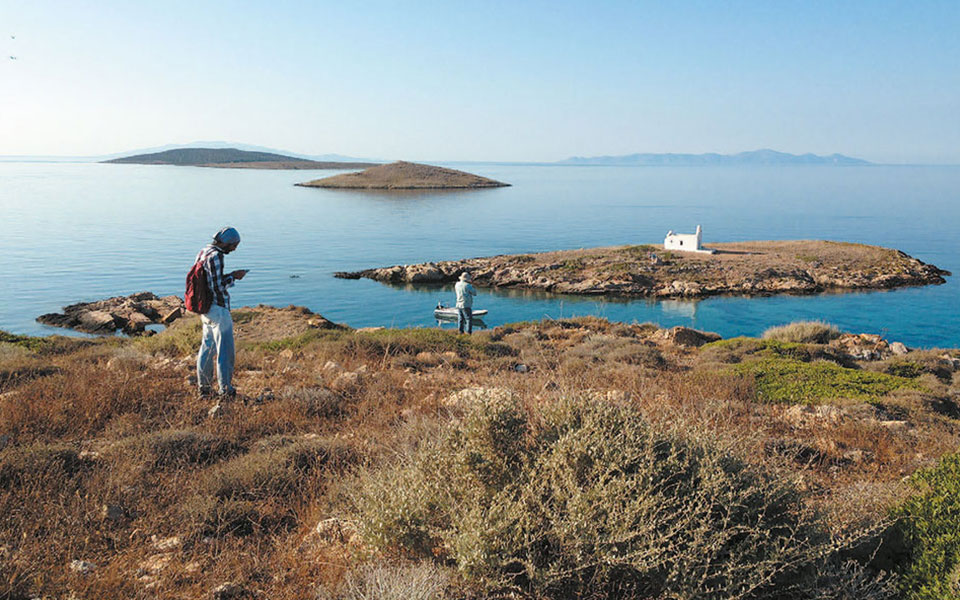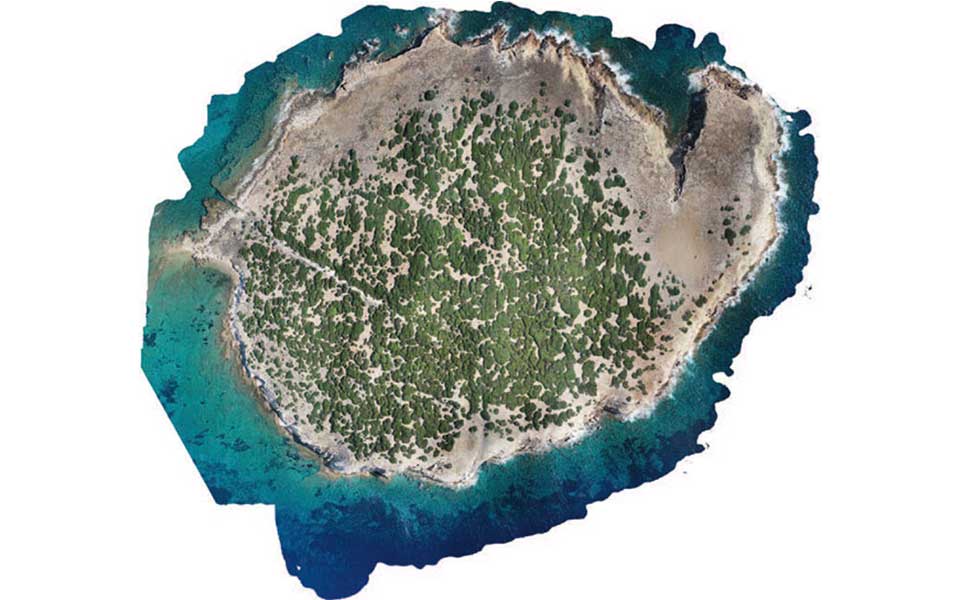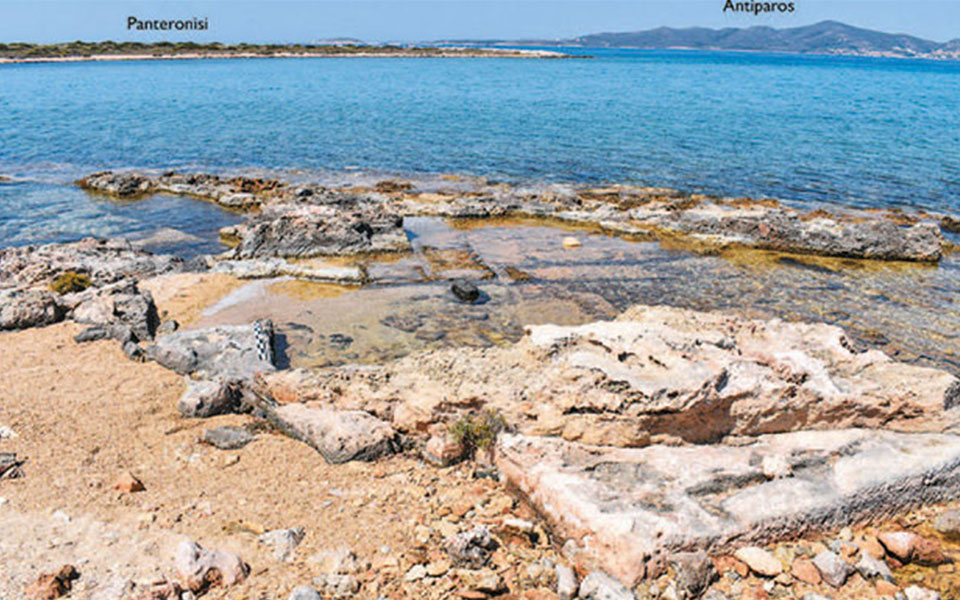Agapi from Poland Finds Expression in the Art...
A Polish-born artist who lives on...

We often go on long holidays to the Cyclades, but how many of us really know the intimate histories of the smaller islands and tiny islets around us?
This is exactly what the Cyclades Ephorate of Antiquities would like to change, through a three-year archaeological project, titled Study of the Cycladic Islands-EKYNI, undertaken in collaboration with the Norwegian Institute at Athens and Carleton College (USA).
The team is currently working to record the history of uninhabited islets located off the islands of Paros and Antiparos, Sifnos, Serifos and Kythnos, Mykonos, Syros, Tinos and Andros. The aim of the project, Dr. Dimitris Athanasoulis, director of the Cyclades EFA, says, “is to document the archaeological remains of these isolated areas and to better understand their role in the long history of the Cyclades.”
“We are researching these islands, because they function as stepping stones between the [main] islands themselves. Of the ten islets we’ve explored so far, all have been found to hold ancient remains. At some moments in time, they were almost abandoned, while at others, they were places of great activity.
“It depended on their resources; that is, whether there was water for humans to survive or natural materials they wanted to exploit. In some cases, there was an outcropping of limestone that could be quarried for building material. During last year’s campaign, using an interdisciplinary approach, we recorded human activity dating from prehistoric times to the present day.
“We started last year off the coasts of Paros and Antiparos; this year we plan to continue the study around Paros, then around Milos and Serifos. If we’re not able to proceed due to the current situation with the coronavirus, the investigation will be postponed for next year.”
The first islet investigated was Dryonisi, off the southeast coast of Paros, where traces of human presence were discovered that attest to its use in antiquity, mainly during the Early Bronze Age and the Late Roman era, while less frequent finds are indicative of activity in the late Geometric and Classical periods, as well as in Byzantine and post-Byzantine times.

“Specifically, a large concentration of pottery and stone tools from the Early Cycladic period on the southeast side of the islet is a strong indication of the existence of a small settlement in that area, while the historical use of a limestone quarry on the islet’s west side can also be seen. Furthermore, evidence of long-standing agricultural activity is rich, as indicated by the substantial number of retaining walls we have identified,” Athanasoulis says.
The Panteronisia archipelago (which includes the islets of Panteronisi, Tigani and Glaropounta), southeast of Antiparos, yielded the least positive results, Athanasoulis reports.
“The most impressive discovery was a sandstone quarry on the rocky islet of Tigani, along with building debris and pottery dating from the Geometric era to Late Roman times. Further north, in the strait between Paros and Antiparos, on the islets of Mikronisi, Tourna and Kampana, historical evidence is limited to constructions from the last century and later, mainly related to livestock activities.”
The cluster of islands off northern Paros that includes Gaidouronisi, Evriokastro and Filizi has already yielded archaeological material in the past, especially the last two. The latest study by Athanasoulis, however, has now brought new discoveries to light.
“Evriokastro has a steep coastline, and is surrounded by an impressive fortification wall and tower system in various states of preservation. The vast majority of pottery found there dates back to the Byzantine period, when the fortifications were built. Evriokastro retained its role as a stronghold until Ottoman times.
“With regard to our findings on Filizi, the movable and architectural remains have proven rich. A surface survey has shown the existence of a significant fortified archaeological site, dated by its movable finds from the late Geometric period to the Classical era (8th-5th c. BC).”

United by an isthmus
The director of the Cyclades EFA also emphasizes that many of the Cycladic islets just mentioned were not always independent, but originally were connected by land bridges – such as Filizi. So too were Tsimintiri beside Despotiko near Antiparos; Vryokastro near Kythnos; and Daskalio near Keros.
“The study is also examining which islets were once joined to the bigger islands. All these islets extend no more than a kilometer in length, with their total number in the Cyclades reaching about 200. Some of these are known to have archaeological traces of human activity.”
Some islets have previously been investigated and will be excluded from the present study. Other islands around Delos and Rineia are included in a separate program, which is also true for Vryokastraki near Kythnos.
In reviewing the results of the latest EKYNI project, directed by Athanasoulis and co-directed by Dr. Zarko Tankosic (Higher Executive Officer, Norwegian Institute at Athens) and Dr. Alex Knodell (Assistant Professor of Classical Studies, Carleton College, USA), Athanasoulis emphasizes that several archaeological sites were documented for the first time, while our existing knowledge for other, previously known sites was expanded.
“The inhabitation or exploitation of these islets was limited to specific chronological periods, often with large gaps in time between them. Access to water sources was paramount, although some islands were important for their mineral wealth – as evidenced by quarry sites, which were probably one of the main attractions that led to their inhabitation.
“At the same time, specific patterns can be discerned regarding the choice of sites at various times, with a typical example being the selection of hard-to-reach and highly defensible sites during the Byzantine period. Therefore, the factors of both isolation and connectivity were crucial in every period, depending on the particular circumstances of an islet.”
This article was previously published in Greek at ekathimerini.com.
A Polish-born artist who lives on...
From Crete to Olympus, hike the...
Ten must-do experiences in Athens, from...
In 30 BC, Octavian, the future...